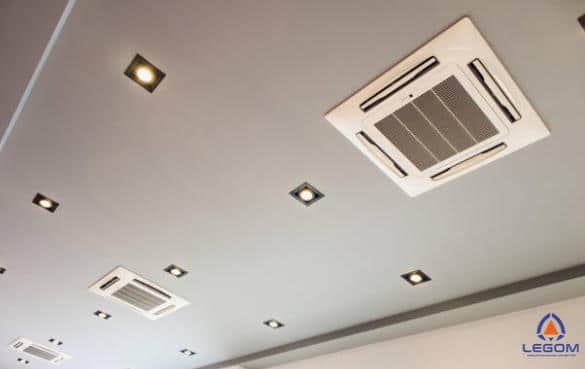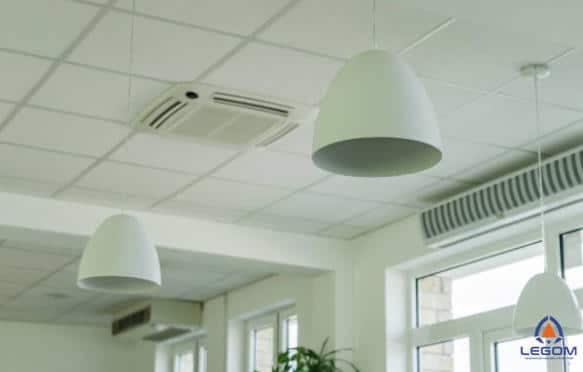
The use of a central air conditioner or commonly abbreviated as central A/C is a suitable and efficient cooling solution for the entire house or large space. For example, in offices or commercial buildings. So, what are the pros and cons of using it? Before that, let’s first find out what central AC is.
Contents
Pros and Cons of Using Central Air Conditioner
The advantages of this central system involve its ability to provide uniform and efficient cooling throughout the room. However, installation and maintenance usually require higher costs compared to smaller or portable air conditioning systems.
To make it clearer, below is an explanation of the pros and cons of using this central system.
Pros of Using Central AC
Here are some pros and advantages to consider when using it.
Uniform Cooling
This system can provide uniform cooling throughout the house or building. Its function ensures that each room gets a consistent temperature, without significant temperature differences.
Energy Efficiency
Central systems tend to be more energy efficient than portable air conditioning units or window air conditioners. This can result in savings in energy costs and electricity costs in the long term.
Do not block windows
This system does not block the view and natural lighting in the house. This differs from window air conditioner units which require additional space in the window.
Silent Operation
Many central AC are designed to operate with low noise levels. This can provide comfort without disturbing the silence in the house.
Effective Air Dispersal
By using an air duct system, central AC can distribute cold air evenly to each room. Useful for creating coolness evenly.
Increase in Property Value
Installing central AC can increase the property value of your home. The reason is because it is an additional feature that many buyers want.
Cons of Using Central Air Conditioners

The following are some disadvantages that need to be considered when using a central system.
Initial and Installation Costs
Installing this model of AC requires high initial costs such as the cost of the equipment. Moreover, if the house does not have an air conditioning system installed previously. Installation costs involve professional work and may require changes to the home’s ventilation system.
High Monthly Operational Costs
The central system is quite energy efficient. However, their monthly operating costs are usually higher compared to some smaller air conditioning units.
Periodic Maintenance Required
This system requires regular maintenance by an HVAC technician. Especially for routine cleaning and inspection. These maintenance costs can add additional costs.
Not flexible
Central AC tends to be less flexible than other units. Especially when it comes to cooling individual rooms. If only a few rooms need to be cooled, the system may not be energy efficient.
Peak Energy Usage
In very hot summers, central AC can require peak energy usage. Use like this can increase electricity costs at certain times.
Components of Central Air Conditioner
This central system generally consists of two main parts, namely an indoor unit and an outdoor unit. The following is the explanation.
Indoor Unit
The interior of the central system is located indoors or in the utility room. This unit includes an evaporator coil which functions to remove heat from the air passing through the system.
Outdoor Units
The outdoor part of the central air conditioning system is typically located outside the building. This unit primarily comprises the compressor and the condenser coil. The compressor plays a crucial role in the air conditioning process; it compresses the refrigerant, which increases its temperature and pressure. Then the heated, pressurized refrigerant is then sent to the condenser coil. Here, the condenser coil facilitates the release of the heat from the refrigerant to the outdoor air. This process is assisted by a fan in the outdoor unit, which blows outdoor air across the condenser coil to help dissipate the heat. Once the heat is released, the refrigerant cools down and turns into a liquid form, ready to be sent back to the indoor unit for the cycle to repeat.
Central AC Working Method
The basic working process of a central air conditioner in sequence is as follows.
- Air from inside the building is sucked in through the evaporator coil by the fan in the indoor unit.
- The refrigerant in the evaporator coil absorbs heat from the air, so the air becomes cooler.
- The cooled air is then recirculated into the room.
- The refrigerant which has now contained heat is carried to the outdoor unit by copper pipes.
- In outdoor units, heat is released to the outside air through condenser coils and fans.
- The refrigerant that has lost heat returns to the indoor unit for the cooling process to repeat.
Ultimately, the decision to use a central air conditioner depends on individual needs and preferences, home size, and available budget. Before deciding, it is important to consider both the pros and cons carefully.
